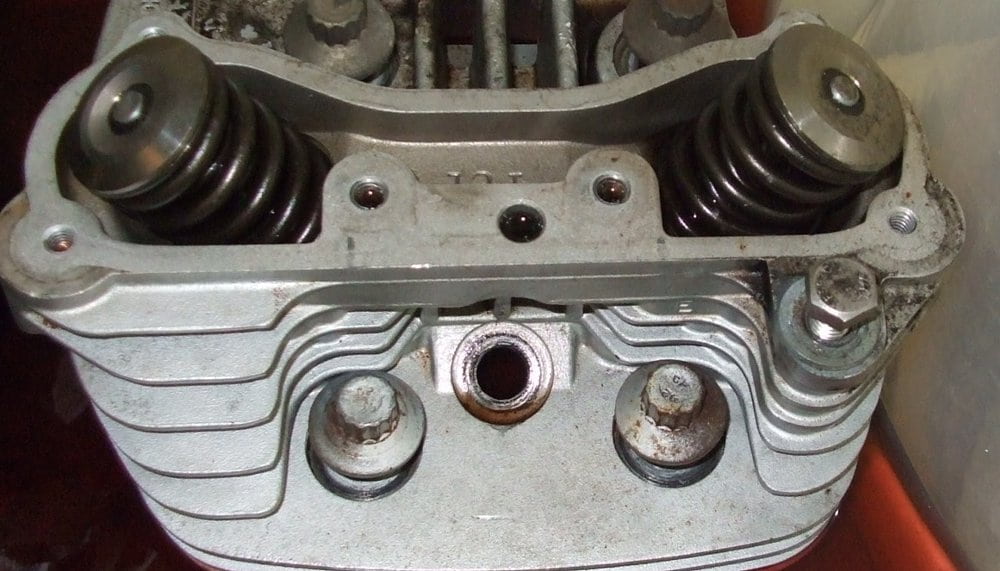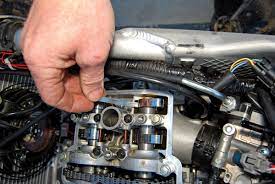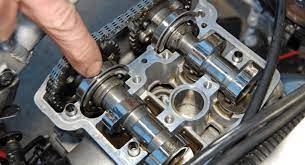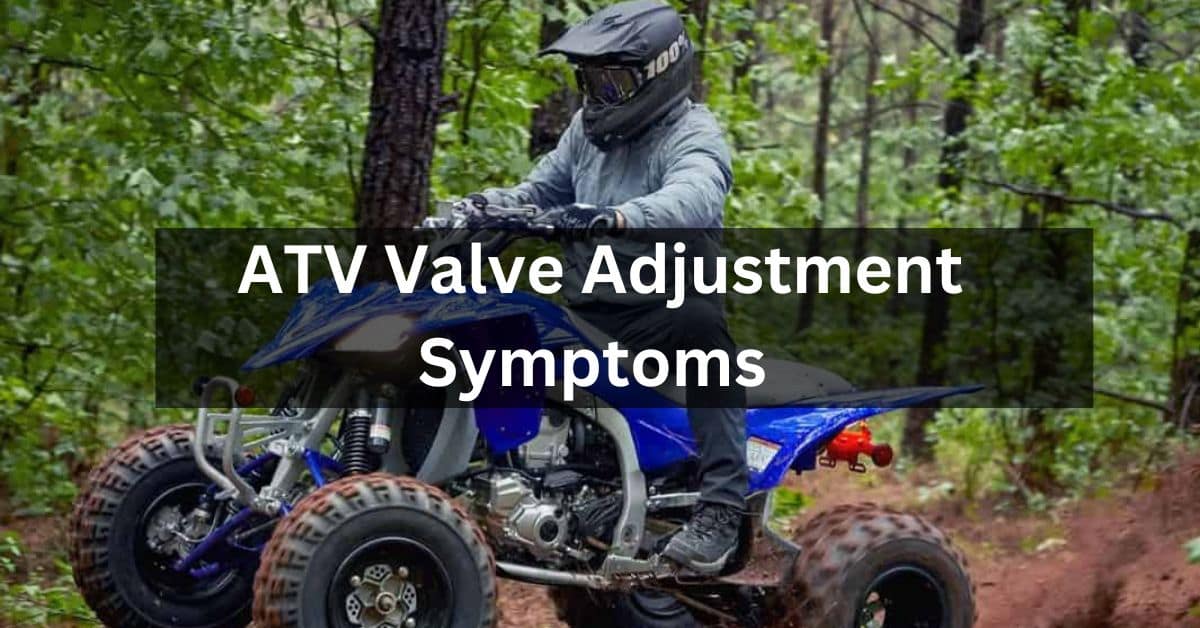When it comes to getting the most out of your ATV’s performance and extending its lifespan, one crucial aspect often overlooked is valve clearance adjustment.
Basically, A clattering sound from the valve area, clicks during idle, and even a subtle power loss could all point to the need for valve checking. Additionally, overheating issues or tightening of intake valves might also indicate that it’s time for an adjustment.
In this article, we will explore the importance of ATV valve adjustment, how to identify symptoms that indicate adjustment is needed, and the steps to take for a smoother ride.
Table of Contents
What Is Valve Clearance? – A Quick Overview!
Fundamentally, Valve clearance, also known as valve lash, refers to the gap between the camshaft and the valve’s rocker arm. This gap allows for thermal expansion and ensures that the valve fully closes and opens as needed.

If the valve clearance is too tight or too loose, it can lead to a host of problems, including reduced engine power, poor fuel efficiency, and even potential engine damage.
Right below, I’ll be discussing the fundamental concepts of adjusting ATV valves, so stick around to gain valuable insights and enhance your experience!
Let’s Explore The Points About ATV Valve Adjustment Symptoms!

1. It Might Be Due To Poor Performance:
At First, When the valves are out of adjustment, the engine’s performance can suffer. The engine might hesitate, stumble, or have difficulty reaching higher RPMs. This can result in reduced power and acceleration, making the ATV feel sluggish and unresponsive.
2. Problem With Rough Idling:
Even One of the telltale signs of valve adjustment issues is a rough or erratic idle. If the valves are too tight or too loose, the engine may struggle to maintain a steady idle speed. This can lead to vibrations, shaking, and even stalling when the ATV is at a standstill.
3. Excessive Engine Noise Issue:
Moreover, Improper valve adjustment can cause excessive engine noise, often described as a clicking or tapping sound. This noise occurs due to the valves not properly closing or sealing, leading to increased mechanical noise as the components interact.
4. Reduced Fuel Efficiency Cause The Iusse:
Furthermore, Valve problems can impact the air-fuel mixture entering the engine, leading to inefficient combustion. This can result in decreased fuel efficiency, causing the ATV to consume more fuel than usual for a given distance traveled.
5. A Key Reason Is Overheating:
Lastly, Inadequate valve adjustment can disrupt the proper flow of exhaust gases, causing heat buildup in the engine. Over time, this can contribute to higher operating temperatures and potential overheating issues.
How To Tell If ATV Valves Need Checking – Have A Look Out There!

1. Check Out The Tapping or Clicking Noises:
If you notice unusual tapping or clicking sounds coming from the engine, it could indicate that the valves are not opening and closing properly due to incorrect clearance.
2. Go To The Reduced Power:
Is your ATV not delivering the power it used to? Incorrect valve clearance can lead to reduced engine performance, affecting your overall riding experience.
3. Don’t Forget About Difficulty Starting:
If your ATV is struggling to start or requires more cranking than usual, it might be due to improper valve clearance affecting the combustion process.
4. Furthermore, Poor Fuel Efficiency:
A decrease in fuel efficiency could be a result of valves not sealing properly, causing fuel to be wasted during combustion.
5. Above All, Backfiring:
Backfiring through the exhaust or intake can be a sign of valves not closing at the right time, causing a disruption in the combustion cycle.
How ATV Valves Lose Clearance – Must check This Out!
- Wear and Tear: Regular usage and engine vibrations can cause the valves to gradually change their clearance.
- Heat Expansion: The extreme temperatures within the engine can lead to expansion and contraction, affecting the valve clearance.
- Dirt and Debris: Dust, dirt, and debris can accumulate over time, causing the valves to stick and affecting their clearance.
And Here You Go! Here Are Some Points You Need to Consider Before Adjusting Your ATV Valves.For more discussions on ATV valve adjustment symptoms, feel free to join the conversation on Reddit.
Why It’s Important To Adjust Your Valves – Informative Insight!
Firstly, it’s the key to unlocking optimized performance – fine-tuning the valve clearance ensures your engine operates smoothly and efficiently, granting you maximum power and top-notch performance during every ride.
Moreover, the benefits extend to your wallet as well. When valves are correctly adjusted, they maintain the ideal air-fuel mixture, resulting in improved fuel efficiency and valuable cost savings over time.

Consider it an investment in your ATV’s longevity. By avoiding undue strain on engine components, ensuring the right valve clearance plays a pivotal role in extending the life of your ATV’s engine, allowing you to enjoy those exciting rides for years to come.
Lastly, the perks translate into comfort. With well-adjusted valves, you’ll experience reduced noise and vibrations, contributing to a quieter and more comfortable ride that lets you fully immerse yourself in the thrill of the journey.
Frequently Asked Questions:
Can I adjust the valves myself, or do I need a professional?
While experienced riders may be able to adjust valves themselves, it’s recommended to consult your ATV’s manual or seek professional assistance for accurate adjustments.
How often should I check valve clearance?
Check your owner’s manual, but generally, valve clearance should be inspected at least once a year or more frequently if you ride frequently or in challenging conditions.
What tools do I need for valve adjustment?
Basic tools such as feeler gauges, a wrench, and a screwdriver are typically needed for valve clearance adjustment.
Wrapping Up The Atv Valve:
In Short, Proper valve adjustment is vital for top ATV performance and longevity.
Look out for symptoms like unusual sounds, rough idling, power loss, and reduced efficiency. Valves need the right gap (clearance) for optimal engine function. Adjusting them ensures power, efficiency, and a quieter ride.
Consult your manual or a professional for adjustments. Regular checks, around once a year, are smart. Basic tools like gauges, wrenches, and screwdrivers are handy.
